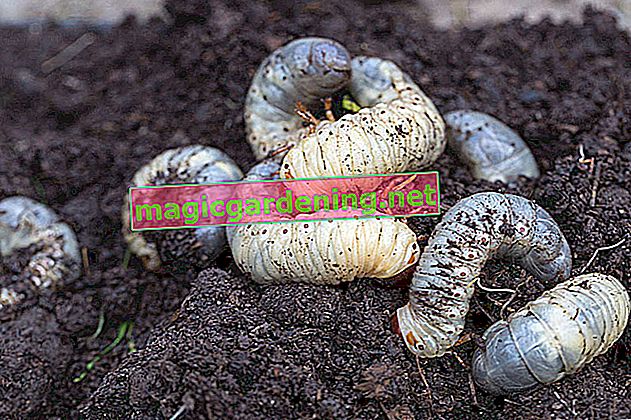
Rose chafer grubs are beneficial organisms
Yes, white grubs can be a problem in the garden. Because some species feed on the roots of living plants - especially those of grass or vegetable plants such as kohlrabi, potatoes or lettuce. This is of course very annoying, even if the damage is usually still manageable. However, it is important to know that grubs are not created equal - especially with regard to the potential for damage.
also read
- How to fight white grubs on the balcony
- How to fight white grubs with garlic
- How to fight white grubs in the flower pot
In general, all larvae from the scarab beetle superfamily are called grubs. The scarab beetle species that are relevant in our latitudes include, for example
- Cockchafer
- June beetle
- Rose chafer
- Rhinoceros beetle
- Garden beetle
The species that can actually be classified as pests because of their root loss are cockchafer, juniper beetle and garden beetle. Rhinoceros beetle and rose beetle grubs, on the other hand, feed exclusively on dead plant material. They therefore do no harm to ornamental and useful plants, but can rather be of great benefit: they prefer to stay on compost heaps, where they find ideal living and supply conditions. By eating the garden waste, they accelerate their decomposition process and, together with bacteria and microorganisms, produce valuable permanent humus.
Rose beetles are under protection
If only in order not to turn down the gift of free humus production, it is not exactly wise to fight the rose chafer grubs. In fact, it's illegal. Because rose beetles and, by the way, rhinoceros beetles are under special protection under the Federal Nature Conservation Act. That is, it is forbidden to harm, capture or kill them - in all their forms of development. If the offense is discovered, there is even a risk of high fines.
Distinguishing features of rose chafer grubs
So it is useful to be able to identify the rose chafer grubs and distinguish them from other grubs. First of all, a practical matter: Since only the useful species feed on dead plant material and the harmful species only from living ones, the discovery of white grubs on the compost is an immediate all-clear. The physical appearance of rose beetle grubs is characterized by a rather small size of about 3 centimeters with a thickened abdomen. The front pairs of legs are very short and, interestingly, they move on the back.








